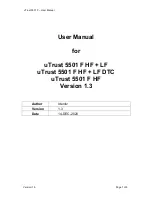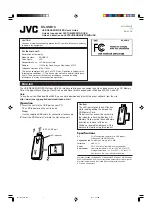
Operating Instructions
MS1300P
Manure Spreader
22
8. Operating Instructions
The operator is responsible for being familiar with and
following all operating and safety procedures.
8.1 Operating Safety
CAUTION!
Hearing loss hazard. Prolonged
exposure to loud noise may cause
permanent hearing loss. Use suitable
protection while operating the
machine.
W016
•
It is the operator's responsibility to read,
understand, and follow ALL safety and
operating instructions in this manual.
•
Never use the machine until the operators are adequately
trained in the safe operation of the machine and have read
and completely understand:
-
The safety and operation sections of this manual.
-
The safety signs (decals) on the machine.
-
The tractor operator's manual.
•
Understand and know how to complete the
Safe Condition
procedure (see
).
•
Wear the appropriate PPE and do not allow long hair, loose
fitting clothing, or jewelry near the equipment.
•
Inspect the manure spreader for damage or loose parts.
Repair or replace parts, as required, before beginning work.
•
Make sure that all safety shields are in place, secure, and in
good condition. Moving parts on manure spreaders, such
as PTO drivelines, side shafts, pulleys and sprockets are
hazardous if not shielded.
•
Do not start the manure spreader until you know everyone
is clear of the machine.
•
Do not operate the manure spreader above 540 rpm.
Excess speeds can damage the manure spreader and void
the warranty.
•
Complete the
Pre-operation Checks
before starting work
Pre-operation Checks on page 23).
•
Never operate any controls from the ground. Remain seated
on the tractor while operating the manure spreader. It is
extremely dangerous to attempt adjustments when the
manure spreader is operating. Spinning beater-bar paddles
and other moving parts can cause injury or death.
•
Do not allow anyone within 20 ft (6 m) of the manure
spreader during operation. Objects thrown from the rear of
the manure spreader could cause injury.
•
Always remove loose manure or soil from tires and other
parts of the equipment before entering a roadway. Manure
or wet soil left on the roadway by your tractor and manure
spreader can cause slippery road conditions for other
vehicles.
•
Use caution when loading the manure spreader. Be aware
of objects and bystanders that are around you. Never exit a
tractor or skid steer with the bucket raised.
•
Do not load the manure spreader unless it is hitched to a
tractor. Do not unhitch a loaded manure spreader from the
tractor and leave it supported only by the trailer jack.
•
Make sure that there is plenty of ventilation in the loading
area. Gases produced by decomposing manure in storage
can be toxic or poisonous to people or animals. Methane
gas is odorless and explosive in nature.
•
Be careful when scraping or dumping at a push-off ramp. If
the ramp surface is slick or wet, the tractor could slide over
the edge of the ramp.
•
Do not attempt to scrape or clean the inside of the manure
spreader when the PTO is engaged. Falling into the manure
spreader's spinning paddles could be fatal.
•
Always spread manure up or down a slope. Spreading
across a slope creates a risk of rollover.
•
Never allow anyone to ride on the manure spreader.
•
Stop the engine when leaving the manure spreader
unattended.
•
In freezing temperatures, make sure that the apron chain
is not frozen to the main-box floor or sides. Make sure that
there are no lumps of manure frozen to the floor. A frozen
load could result in equipment damage.
•
Always park the manure spreader on level ground. Place
blocks ahead of and behind the wheels before unhooking
it. This prevents the manure spreader from unexpectedly
rolling when it is separated from the tractor.
















































